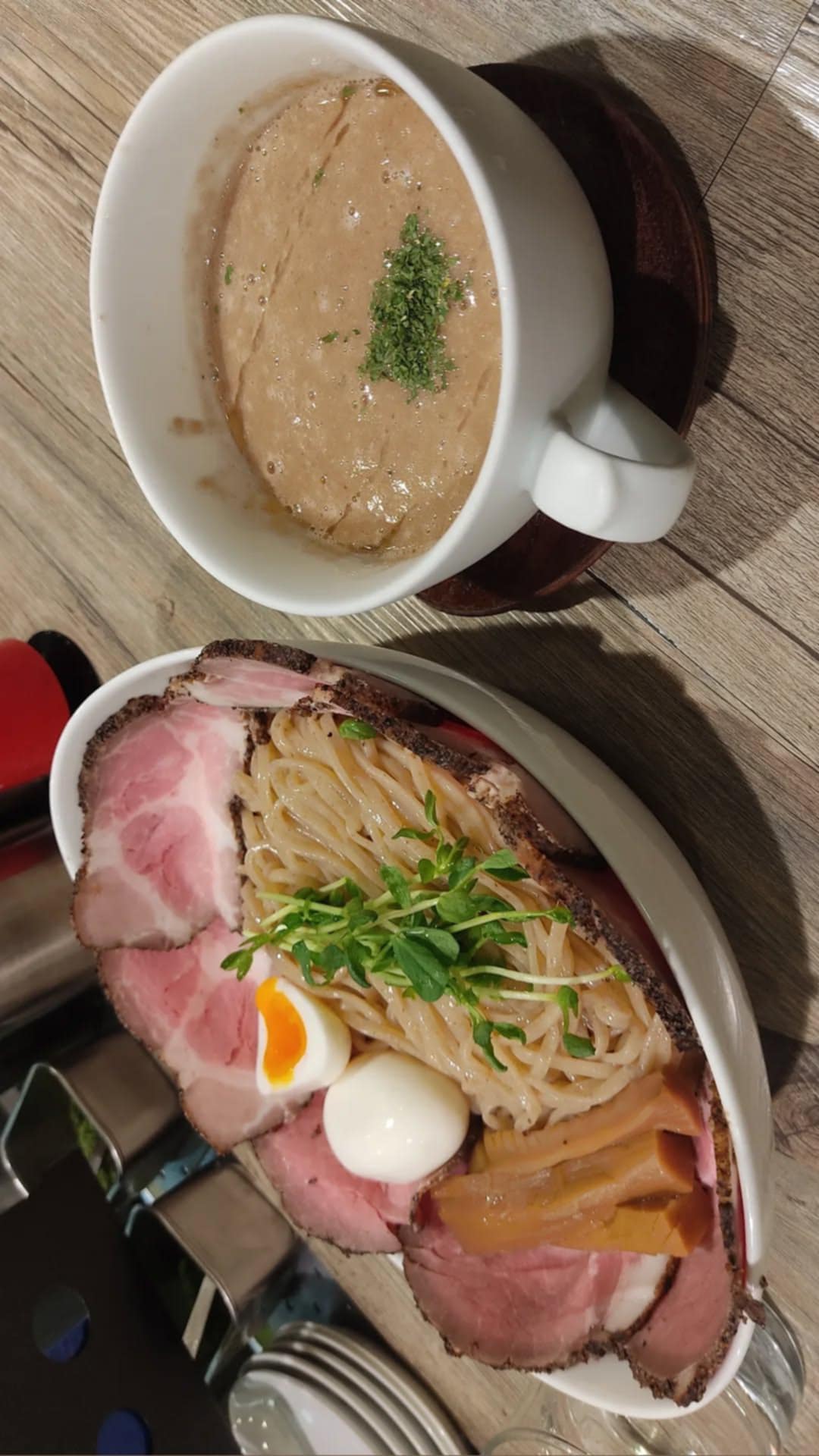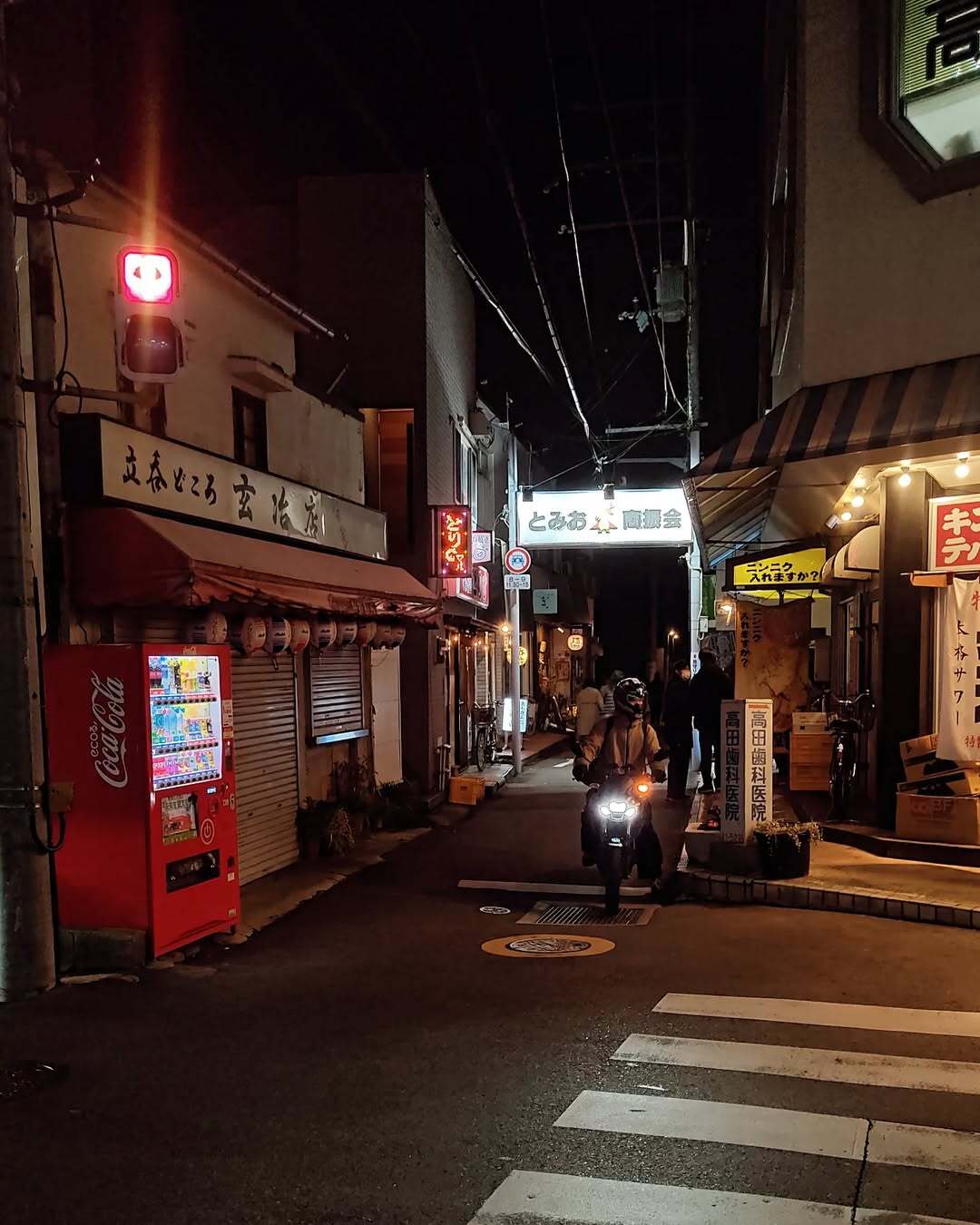Months after returning from NAPI, I set out to upload some shots on Instagram, as tourists do. Reels aside, my first upload is an otherwise unremarkable intersection from Tomio, a rather quiet station tucked within Nara. It was on the way to our first (of many) tsukemen. Near the station is a pachinko place, the façade that could approximate the feel of being in a Wong Kar Wai film. The bright neon pink lights illuminate the walk out of the station.
Tomio is as ordinary as a residential area would be. A station servicing around 25,000 people, at least to the extent of what I can search in English. Granted, we only visited on a Monday night, so there were no other tourists but us, if there are other tourists actually visiting the area. It felt as if to speak Filipino is to intrude in the settled life that is in Tomio. But we did anyway, no one else can understand us but ourselves. We were as removed from the Philippines as we could be.
The tsukemen in Ano Ramen Seisakusho was the warmest welcome to Nara that I have received that winter night. Especially with a body not used to the cold, signalling survival and a desperation to eat ramen in Japan for the first time, my order of a double serving, to my friends and guides’ surprise, was a sight to behold and a feast to enjoy. I finished it clean, again, to their surprise. It is still a mystery to me how I did that, now that I sometimes struggle to finish a bowl of ramen. I tell myself that it was the survival mode, the body in need of a stockpile. But could it be a different kind of hunger as well, that of a life that this, too, will be an everyday sight, so to compensate, I bring it with my body as much as I can. A sorry excuse for my gluttony. Back in Sentan, I slept soundly.

There is also a grocery in Tomio that our guides spoke fondly of, Gyomu (now permanently closed, unfortunately). It is cheaper to buy groceries here, as we were told. When you already are a year living in NAIST, the food options might become so repetitive and expensive that cooking for yourself is imperative. Here, they bought their meat supplies. And so I bought my share of bread, cheesecake, and matcha mochi ice cream, along with a yellow eco bag that is too sturdy and too cute to be just a supermarket bag. Next to it, a liquor shop, an essential stop for those in graduate studies. I saw somewhere that to enter the supermarket is a unique cultural experience, a reflection of the everyday, of what is needed and what is offered. Going back to the train station after the grocery run at Gyomu, with the yellow bag in my shoulder, I felt a certain normalcy and stability. Tomio already had left its impression on me.
I think of Tomio fondly, as if a secret uniquely afforded only by my internship. This was a Japan that I was looking for, stripped of the illusory wonder of the touristic allure. More than the trips to the city, I think Tomio offered a glimpse of what my life would be like in Nara. After the Yamayaki festival, we rode the train directly here to have yet another ramen dinner. Stepping out of the station and seeing the neon pink signs of the pachinko place eased myself that after the bustle of the city is the quietness of home. The warmth of soup emblematic of the warmth of place. Exactly that, even for a brief moment, the possibility of home.
